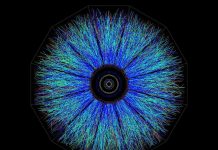
An international team led by Prof. Ge Jian from the Shanghai Astronomical Observatory has used artificial intelligence (AI) to detect rare signals in the universe.
The team focused on weak signals from quasar spectra, which are light sources from distant galaxies.
Using deep learning neural networks, they identified “neutral carbon absorbers” – crucial tools for studying galaxy formation and evolution.
Neutral carbon absorbers are found in cold gas with dust in the universe, but their signals are weak and hard to detect.
Traditional methods have struggled to find these signals in large datasets. Prof. Ge compared this to “looking for a needle in a haystack.”
In 2015, scientists found 66 neutral carbon absorbers in data from the Sloan Digital Sky Survey (SDSS).
However, Prof. Ge’s team has now discovered 107 of these rare absorbers using their AI method. This doubles the number found in 2015 and reveals even fainter signals.
The team’s success came from training deep neural networks with simulated samples based on actual observations. When applied to SDSS data, these networks identified many more neutral carbon absorbers.
By combining the spectra of these absorbers, the team could better detect the abundance of elements and measure metal loss due to dust.
Their findings suggest that early galaxies with neutral carbon absorbers evolved rapidly about three billion years after the Big Bang.
These galaxies, transitioning between the states of the Large Magellanic Cloud and the Milky Way, produced a lot of metals, some of which formed dust particles. This led to the observed dust reddening effect.
This discovery supports recent findings by the James Webb Space Telescope (JWST), which detected carbon dust in the earliest stars.
Both studies indicate that some galaxies evolve much faster than previously thought, challenging existing models of galaxy formation.
While the JWST studies galaxy emission spectra, Prof. Ge’s team looks at quasar absorption spectra. Using AI to find neutral carbon absorbers offers a new way to study early galaxy evolution, complementing JWST’s research.
Prof. Ge emphasized the importance of developing innovative AI algorithms to quickly and accurately explore rare signals in vast astronomical data. The team aims to extend their method to image recognition by creating artificial “multi-structure” images for better training and detection of faint signals.
Their work, published in the Monthly Notices of the Royal Astronomical Society, showcases the potential of AI in advancing our understanding of the universe.



